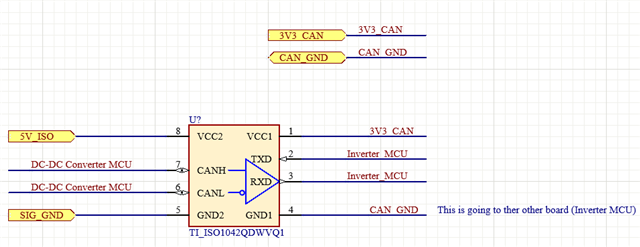Tool/software:
Hi,
I am using the ISO1042QDWVQ1 in my design, and I am a bit confused about how to implement this isolated part.
One side of the transceiver connects to my DC-DC MCU (which will act as a slave), while the signals come from the Inverter MCU (which will act as the master).
-
Please refer to the attached schematic. Does the CAN_GND here need to connect to the other board and the transceiver on the Inverter MCU (master transceiver)?
-
CANH and CANL will operate at 5V since the transceiver is powered by 5V as per the datasheet. However, the maximum voltage for my STM32 pins is 3.3V. Is there a TI IC available that can interface between the transceiver's CANH/CANL and the MCU to convert the signals to 3.3V?
- Or should I be using 4 transceivers to communicate between my 2 STM32 microcontrollers ?
(Each MSC gets 2 transceivers, one to send signal and to receive signal)



